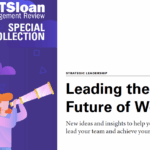2026 Deposit Retention Playbook: Stop Guessing, Start Detecting (and Acting)

By Devon Kinkead
If your 2026 plan still waits for balances to drop before you act, you’re showing up after the goodbye. The winners will spot “why” and “when” long before the money moves—then intervene with the right human + digital touch.
Context: what history taught us
Across the 2008 crisis, the long zero-rate era, and the rate whiplash of 2022–2024, one pattern held: deposits flow to whoever delivers clarity and convenience at the moment of need. Institutions that treated retention as an always-on discipline—proactive outreach, clean journeys, fee fairness—lost less and deepened more. The next cycle won’t be kinder. Customers expect their bank to already know what they need, and your teams must execute without friction.
What’s different now (and why it matters)
- Hidden pain points are the churn factory. Traditional retention models are reactive. They see the balance drop; they miss the string of frictions that caused it. New research in banking CX highlights how banks overlook broken journeys (e.g., dispute loops, fee surprises) because signals are buried in silos; graph-style analytics can reveal these relational, cross-journey patterns and surface early attrition clusters—before accounts close. The Financial Brand
- Life events are the deposit moment. The biggest inflows (bonus, inheritance, home sale, business liquidity) are also the riskiest moments for attrition if you don’t engage in time. Micronotes’ “Exceptional Deposits™” approach detects outlier deposits in real time and launches a micro-interview in mobile/online banking to capture intent, route to a banker (when needed), and convert the moment into a stickier relationship. Micronotes+2
- Execution is a people system problem. Retention programs stall when meetings multiply and teams burn cycles on rework. MIT Sloan’s Leading the Future of Work research shows meeting-free days materially raise autonomy, communication, satisfaction and productivity—peaking around three no-meeting days per week. That’s an operations unlock for any cross-functional retention “tiger team.”
- Culture is capacity. Toxic culture is the single strongest predictor of employee attrition—10x more powerful than pay during the Great Resignation—draining service quality right where retention is won or lost. Fixing retention without fixing culture is bailing water with a hole in the boat.
- Happy teams perform better. Large-scale evidence finds employees with higher baseline well-being dramatically outperform peers (about 4x more awards in a longitudinal study), a reminder that frontline engagement directly affects customer retention moments.
The 2026 Micronotes-informed retention system
1) Detect sooner: instrument your “why”
- Adopt relationship/graph analytics to connect customers, products, journeys, fees and service interactions. Look for clusters: e.g., a spike in disputes linked to one ATM or app flow. Use these maps to route proactive outreach to the entire at-risk group, not just the loudest caller. The Financial Brand
- Wire in life-event detection. Enable Exceptional Deposits™ on your digital rails so a statistically unusual deposit triggers a short, conversational interview (not a static banner) to learn intent—saving for a home, paying down debt, moving money to a brokerage—and present the most relevant option (growth CD with partial withdrawal, wealth consult, 529, treasury management). Micronotes+1
2) Act faster: shrink time-to-help
- Automate the “handoff contracts.” For every triggered conversation, define the exact deliverable to the next role (advisor, branch, operations). No email ping-pong. The Micronotes model moves typical cases to auto-fulfillment and only escalates atypical ones to leaders. Micronotes
- Fix the top three journey breaks each quarter. Use your graph findings to quantify loss from each friction (e.g., disputes that generate overdraft fees and callbacks) and repair in order of revenue at risk. The Financial Brand article stresses moving beyond row-and-column analytics to relational issues like network contagion and bank-driven frictions. The Financial Brand
3) Personalize the save
- Event-aware offers beat blanket rates. If a life event is inferred (job change, move, retirement), lead with the adjacent need (mortgage portability, financial plan) and then the deposit wrapper (laddered CDs, HY savings). That positioning boosts relevance and stickiness. The Financial Brand
- Close the Gen Z relevancy gap. Younger customers expect anticipatory, AI-driven guidance and will walk if they feel unseen—so the “interview at the moment of deposit” is not cute UX; it’s table stakes. The Financial Brand
4) Prove it with tighter metrics
- Measure beyond balance. Track retention lift, balance persistence at 30/90/180 days, incremental NIM, cross-sell uptake, complaint rate, and time-to-resolution. Micronotes advocates running a 30-day pilot to baseline these metrics and demonstrate lift quickly. Micronotes
Operating model upgrades (so this actually ships)
- Institutionalize “no-meeting days” for the retention squad (e.g., Tue/Wed/Thu meeting-free). Expect higher productivity, lower stress, and better collaboration scores—conditions that accelerate journey fixes.
- Make culture a KPI. Report quarterly on micro-cultures in service, fraud, digital and branch teams. Toxic pockets sabotage retention; leaders must detect and detox them with the same rigor used for NIM.
- Hire and develop for well-being. Treat team well-being as a performance input: happier, more optimistic employees measurably outperform, which shows up in faster, friendlier saves.
What to start next week
- Stand up a 30-day pilot: feed digital/mobile data to trigger Exceptional Deposits™; measure retention lift, balance persistence, and NIM. Micronotes
- Map one friction end-to-end (e.g., disputes) using graph analysis; publish a 60-day fix plan with dollar impact. The Financial Brand
- Protect execution time with two to three no-meeting days for the squad; review outcomes monthly.
The forward look
By 2026, deposit retention won’t be about paying the highest teaser rate. It will be about seeing the moment, asking the one right question, and moving fast—with culture and workflows that make great saves the default. If you can detect life events as they happen, fix the few frictions that matter, and let data guide timely human outreach, you’ll keep the dollars and the relationship.



